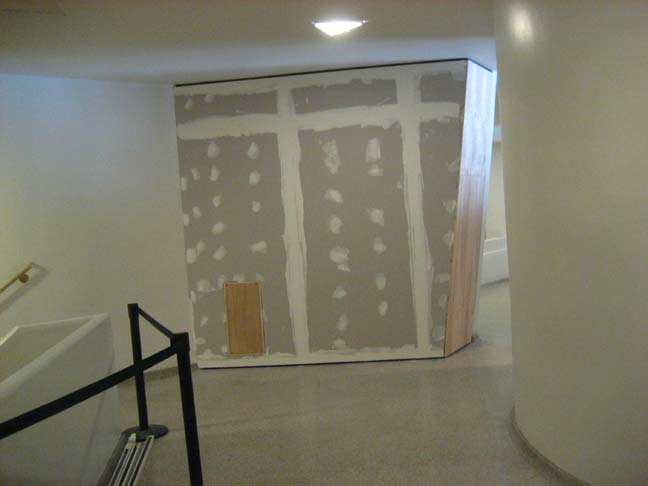
This central work in the Guggenheim Museum’s “The Third Mind: American Artists Contemplate Asia, 1860–1989 (January 30–April 19, 2009) is hidden from the view of many museum goers on the staircase at the second floor. The unmarked and anonymous piece epitomizes the Eastern influences on postwar American art. The curators have placed the work out of the main current of museum traffic as a sly way of suggesting how Oriental art emphasizes indirectness, hiddenness, and avoids the direct confrontation of spectacle typically found in Western art. Deeply imbued with an Emersonian aestheticism, the work suggests a transcendence of the figure and ground relation through its subtle, sometimes transculecent composition as well as its palette of grey and white. Perhaps the door on the lower left suggests an Eastern opening of the perceptual field. The whole work exudes a sprit of meditative openness to the space outside it. The influence of Chinese calligraphy is apparent – both in the vertical columns (the heavier white lines creating the impression of two scrolls) and the fluidity of the brush strokes. At the same time, the work – an unfinished wall with plaster – marks the breakdown of art and everyday life as written about by John Cage, who was influenced by the lectures of T.Z. Suzuki in the early 1950s. The artist’s anonymity marks a Zen-like remove from the ego of the Western artist. We can only assume that this anonymous artist experienced a direct exposure to the Orient, perhaps by visiting, at an early age, a restaurant (perhaps undergoing renovation) in San Francisco’s Chinatown.